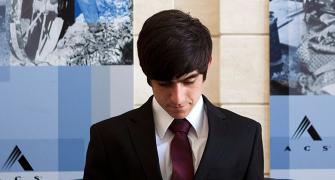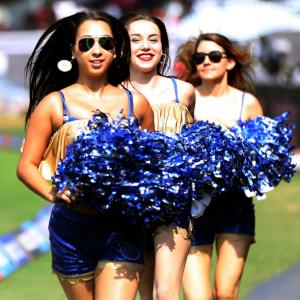The California Superbike School, which has trained many MotoGP and WSBK champions in various countries, will train Indian riders now.
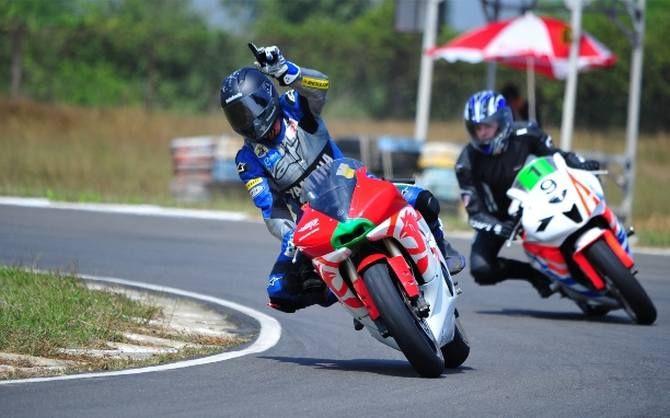
So, ever since we understood biking, ever since we developed a love for bikes and ever since we began our affair with racing, we've known the name of Valentino Rossi. How many times have you stared at your television screen in awe and amazement wishing that you could just have even one-fourth the techniques that he has.
Having the talent, skills, passion and a daring attitude to live life in the fast lane is no small feat. Take heart guys, all is not lost and it certainly is never too late to begin learning those techniques. The California Superbike School is here to turn those dreams to reality. Brought to India by T T Varadarajan, CSS, has trained many MotoGP and WSBK champions in various countries. Here's Varadarajan sharing with us all about the ins and outs of CSS.
What made you decide to bring CSS to India and how long did it take you bring CSS here?
I have always had a passion for motorcycles and motorsport. When I first attended the school in the 90s, I realised that a school like CSS had the potential to benefit Indian riders. At that time, Indian riders had plenty of talent, but what they didn't have was access to world class coaching and track time.
Top level riders from India performed well in the domestic circuit, but failed to be competitive when they raced abroad. CSS was initially brought to India by us to serve as a platform that provides the necessary skill sets to talented Indian riders in order to help them achieve success in the international motorsport arena.
Additionally, skills taught at CSS are very tangible and apply as much to riding on public roads. Each year India records the highest number of traffic related accidents and fatalities in the world. The objective of CSS India is to improve the riding skills of every motorcycle rider and to make him/her conscious of safe riding practices, which is the responsibility of any motorcycle rider on the road.
We first thought of the idea in the mid 90s. Finally, 15 years later we made it a reality by bringing CSS to Chennai in 2010, the school's very first foray into South East Asia. It took plenty of persistence and determination for us to convince the CSS team to come to India.
There were many challenges during the first year of the school in 2010; we had no prior experience in running a school/event of this scale. Today, it is one of the most sought after schools for the global coaches, they love coming to Chennai!
What is the racing industry like in India and what is the growth that you foresee for racers in India?
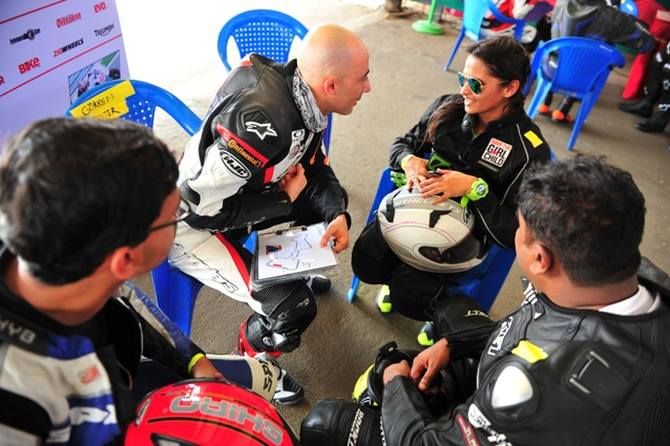
The racing scene in India has progressed in some ways and regressed in others.
In terms of infrastructure and opportunities, racing has come a long way in India. Prior to the 90s, India only had one race track in Sholavaram, Chennai. Today we have 3 tracks, two of which are world class facilities. There are many different racing categories and series that riders can take part in today to use as a stepping stone before they make their mark in the international circuit. The future looks bright for Indian motorsport and there are many kids who have got opportunities to race abroad today than in the past. Schools such as CSS can provide a much-needed platform to riders which will help them be more competitive internationally.
Where it has regressed is in terms of spectators. In the past there were massive crowds attending races which made it viable for manufacturers and sponsors. Today we barely see any spectators at races and much of this can be rectified if the governing bodies and manufacturers can cooperate and run races together rather than have one-make races.
Rivalry between multiple brands and manufacturers creates excitement which is much needed in today's racing scene in India.
Where are the trainers from and how many trainers do you have during a batch?
The coaches of CSS's India branch comprise of the top coaches from CSS's global pool. So far we have had the best coaches from the US, UK, Australia, New Zealand, Greece, Turkey and Dubai. Each year the school consists of 9 coaches (including 1 seminarist) plus 2 support staff.
The Indian branch of the school is the only one that boasts of having had the most qualified bunch of CSS coaches and directors in the world gather at one location. We've also had star guest coaches at CSS India such as the likes of Leon Camier (BSB Champion and WSBK rider) and Joe Roberts (AMA Champion and MotoGP Redbull Rookies Cup rider). Keith Code, the founder of the school and arguably the most respected and successful on-track instructor in the world has taught at the Chennai school in 2012.
Can you share with us details of your training and teaching methods?
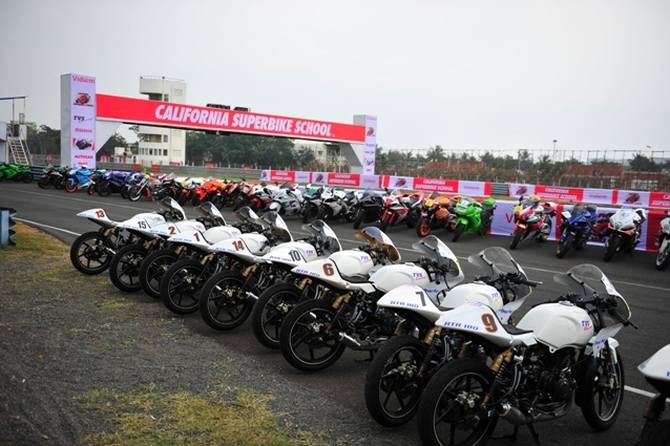
The school itself consists of 4 levels. It is a very structured programme and each level focuses on specific skill that all tie in together. What you get as a student is the most effective progression of skill sets ever devised for learning the techniques of riding and cornering.
Levels 1-3 are conducted over 3 days and consist of specific drills in a structured format. No matter how experienced you are, if you have not attended the school before, it is mandatory to start at level 1.
Each day is split up as follows:
- Registration in the morning followed by a bike and kit check to ensure all safety norms are adhered to
- Safety briefing for all riders on flags and safe riding practices as this is a school and not a race
Sessions per day as follows:
- The riders are split up into 3 groups. Each group undergoes a seminar on the specific drill, followed by a 20 minute track session where you practice the drill under the close supervision of a coach who rides with you on track.
- The on-track session is followed by an off-track briefing where the coach gives you feedback on how you fared for that particular drill and what to work on next.
- Level 4 is for repeat students where you work with your coach on techniques that you wish to improve. It consists of any of the drills taught in Levels 1-3 and is based on which skill you need to work on most.
- Level 4 seminars are conducted only by the most experienced coaches at CSS.
What are the skill sets a racer is equipped with post the course?
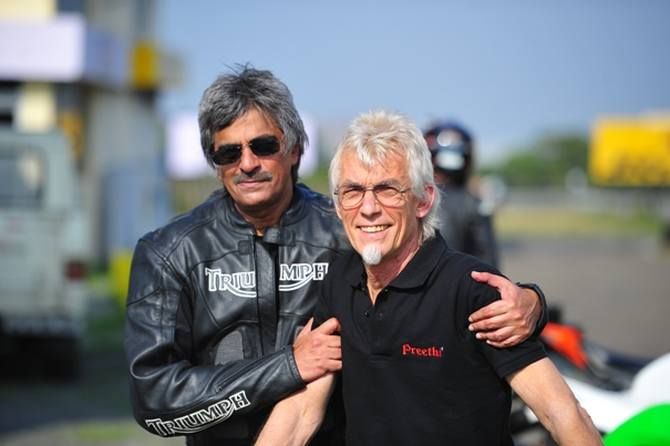
Racers are equipped with several skills post attending the school which enables them to ride a motorcycle more effectively, efficiently and faster. This in turn helps them perform better in race situations as the skills learned give you a tremendous confidence boost on a motorcycle. There are too many skills to list individually but the most common areas of improvement are:
Rider Input: This includes elements that help you improve on inputs that you give to the motorcycle such as throttle control and counter steering etc
Vision: Where you look and how you interpret things on a race track have huge implications on speed and control when you're riding a motorcycle.
Body position: How you interact with the motorcycle affects the way the motorcycle handles as it changes the geometry of the suspension
What's the profile of the students who come to CSS? What part of the country do they normally come from and what's the next step after completing the course if they want to pursue racing professionally?
There is no specific profile that defines CSS's students. We have kids from the age of 16 to older students aged 60 and above. There are professional racers, students, doctors, engineers, entrepreneurs, accountants and other various walks of life at the school. All of them have only one thing in common -- an unconditional love for motorcycles and riding! It is like a brotherhood where many like minded people get together for a weekend of riding, learning, bonding and most of all having fun.
Racing as a career is difficult to pursue as it is very demanding not only in terms of discipline, commitment, skill and fitness but it is also a huge financial burden. Other than the important task of securing sponsors, aspiring riders need to compete at the domestic level (National Championships) for a few years where they can progress from the novice to the expert categories. If they are successful at this level, it makes it possible to consider racing at the international level which is a lot more demanding.
What is the cost of the course?
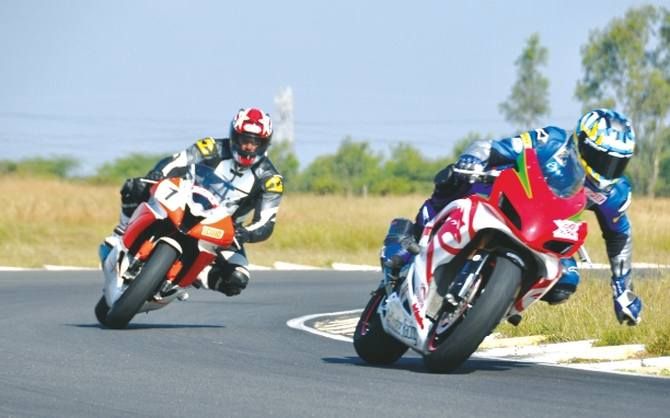
This year the cost of the course in India is Rs 52,000 for 3 days. This includes all of the coaching, fuel, bike if you don't have one, insurance and food and beverages throughout the day. Other CSS schools globally cost thrice as much as the school in India.
Tell us more about the advanced riding techniques course you have...
The advanced rider technique (ART) school is based on the techniques taught at the California Superbike School. While CSS's focus is on providing instruction on safe and technically sound riding practices on a race track, the ART programme is a more accessible version of CSS which usually takes place in large parking lots. It is targeted towards "everyday two wheeler commuters" in an effort to reduce road accidents and fatalities by teaching them about safe riding practices.
As I mentioned earlier, India has the most unsafe roads in the world, Chennai being the most unsafe within India. Every year, India records the most number of road related fatalities worldwide and a majority of these fatalities involve two-wheelers. The ART programme is designed to provide instruction on safe and skilled riding practices to people who need it the most -- students and young professionals who use two-wheelers as their primary mode of transport. The technology that ART is based on has evolved over decades of thorough understanding of rider and motorcycle interaction.
How is CSS different from other racing schools in the country?
CSS is the world's foremost and best known riding school. The school has produced several world champions over its rich 3 decade history. No other school in the world let alone ones that exist in India boast of such credentials. The techniques taught here have been developed over 30 years of research and through understanding of motorcycle and rider interaction.
What is the next level of promotion that you are looking at for CSS?
We are in talks with motorcycle / tyre / oil companies to rope in sponsors for 2016. The objective is to run multiple schools at multiple venues and not just limited to one event a year.
We are hopeful of starting ART in India next year which will benefit a lot of people who use motorcycles for commuting.
The Super Sport category is the most exciting category of the National Championship. Preethi Racing (sponsored by us) won the title four years in a row and comprised of India's top racers. However the category was scrapped last year due to dearth of entries. We are negotiating with event organisers and the motorcycle manufacturers to revive the Super Sport category in the National Championship this year. This is the way forward for two-wheeler racing.
In our first school in 2010 Alisha Abdulla was one of the 24 Racers we trained (free) at CSS, Chennai. Since then every year one or two ladies have taken part in CSS. Multitasking (Rider Input, Vision, Body Position...) is a requirement for riding motorcycles and women excel in this skill. We hope to get a group of 21 women to ride at CSS 2016.




